When I think of the influence English garden design has had on gardens throughout the Western world, cottage gardens and Arts and Crafts gardens come to mind. But the roots of some contemporary garden features can be traced even further back — to the 18th century and the English landscape gardens of William Kent, Humphrey Repton and Lancelot 'Capability' Brown.
Before Brown, the house dominated its surroundings. With his designs the house became an integral part of the landscape, achieved by allowing the gardens to reach to the walls of the house in the form of expansive grass meadows.
Though Brown and other landscapers redesigned the country estates of the landed gentry — remodeling the landscape, creating serpentine lakes and installing classical temples and follies — the relationship of the house to its garden in general was greatly changed. Their ideas still influence our gardens today and can easily be transferred to our more humble dwellings.
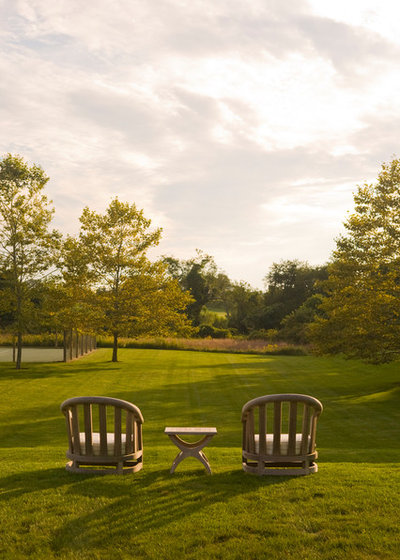
David Scott Interiors
Until the 18th century, English country houses were closely surrounded by formal, stylized parterres.The landscape beyond was thought of as wild and untamed, so this enclosure around the house gave the householders a sense of security.
Removing this horticultural barrier, thereby setting the house within the landscape, was an immense change.
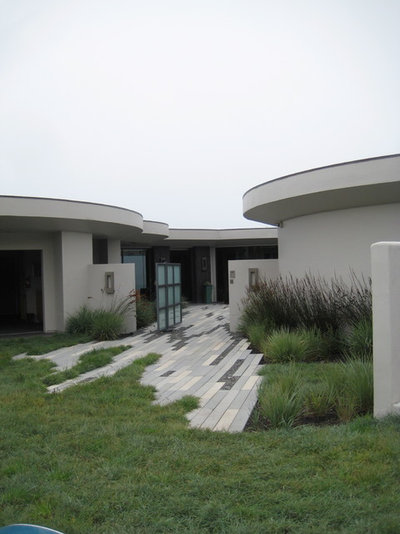
Jeffrey Gordon Smith Landscape Architecture
The House as Part of the LandscapeThis modern house integrates the house with the garden, with the patio and entrance paving blending almost seamlessly with the rough surrounding meadow grass and plantings.
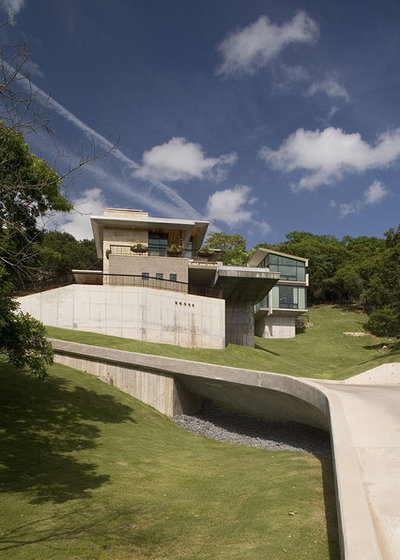
Hargrave Architecture
This house not only is set within the landscape; it has become part of the landscape. Instead of the landscape being interrupted with plantings around the house, the sinuous lawns sweep right to the walls of the house.
This feeling of the home's being one with the landscape is strengthened through the serpentine driveway, which follows the landscape's contours on its curving pathway to the house.
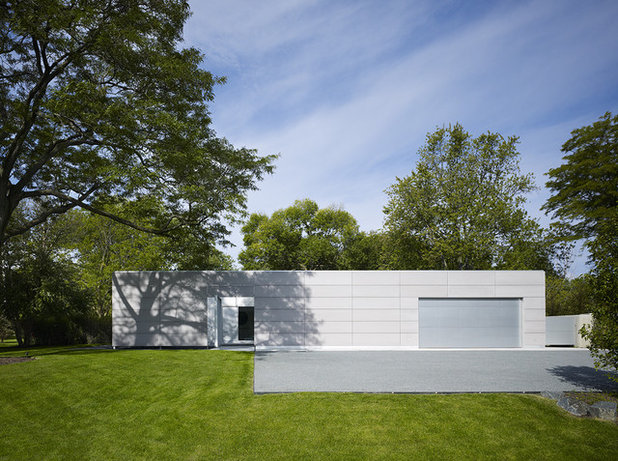
Wheeler Kearns Architects
Lancelot Brown's style of smooth undulating grass running straight to the house suits modernist housing in the same way it did the Palladian architecture of the 18th century.
The simplicity of the open expanse of grass running to the house really complements the minimalism of the architecture.
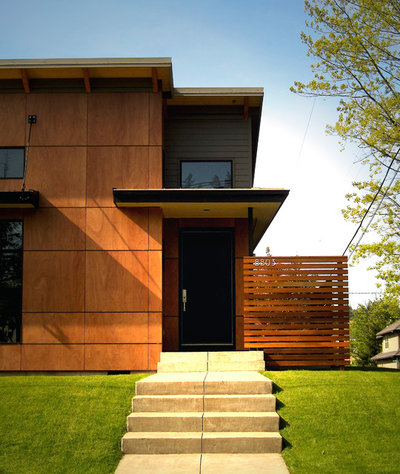
Giulietti Schouten Architects
A Move Toward Low MaintenanceGarden maintenance costs were as much a problem in the 18th century as they are today. Formal gardens required lots of costly manpower, so losing the parterres and replacing them with simple meadows made financial sense.
When we use slower-growing and drought-resistant grasses that suit various climates and soils, we can achieve the benefits of lower-maintenance plantings today.
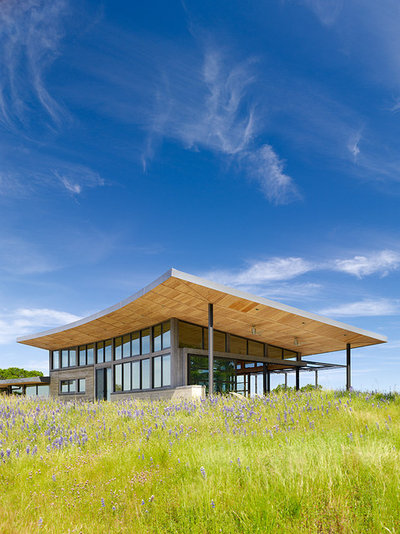
Feldman Architecture, Inc.
Before the invention of the lawn mower, grass was kept short by scything or shearing — a very labor-intensive method. In the English landscape garden, large swaths of grass were left as meadows or grazed short by sheep and cattle.
Wildflower meadows have gained popularity in recent years and can provide a wonderful setting for the most modern of buildings. The 2012 Olympic Park in London was a great example of how modern meadows scattered with both native wildflowers and exotics can set off state-of-the-art architecture.
Wildflower meadows require plenty of patience and a good amount of research to select the right plant and grass mix for your conditions.
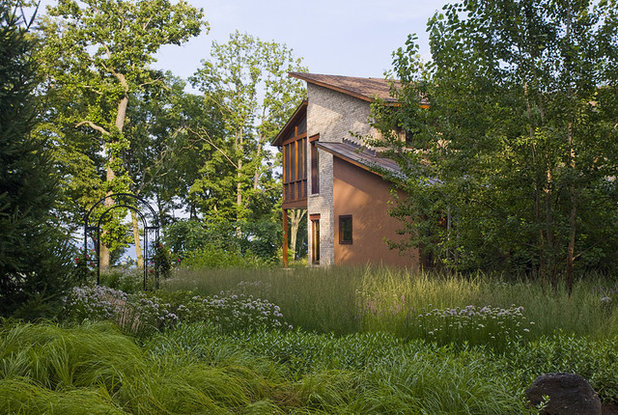
The Garden Consultants, Inc.
Creating a low-maintenance meadow is relatively easy, with the development of more compact and lower-growing herbaceous perennials and the use of ornamental grasses. With the current trend of Prairie-style plantings, it's easy to see how this can be transferred to the meadow plantings of English parkland.
Allowing the dense, almost lush, plantings to grow hard against these house walls once again sets the house directly in the landscape.
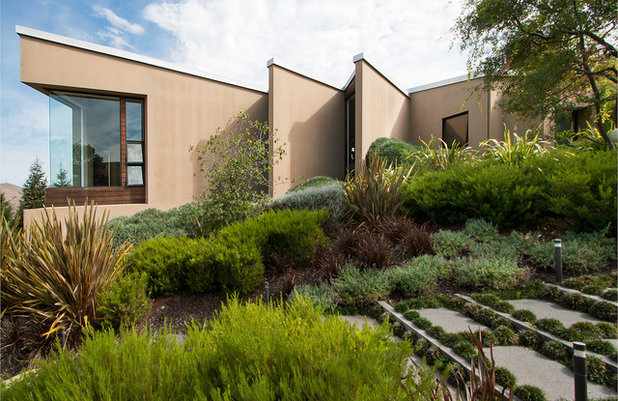
modern house architects
When meadow grasses and herbaceous perennials aren't an option for your climate or location, low shrubs can give a similar effect.
Once again because of plantings that grow right up to the house, this house becomes part of its surroundings.
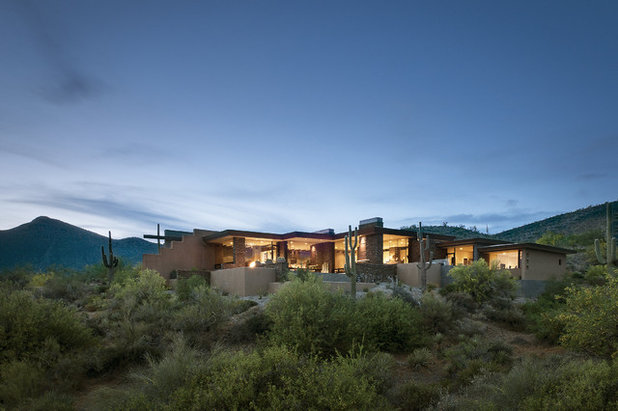
Tate Studio Architects
Desert conditions are far away from England's green land, but we can still see the same ideal of allowing the house to blend into the landscape.
More: Let Nature Inspire Your Landscape: Grasslands to Garden





